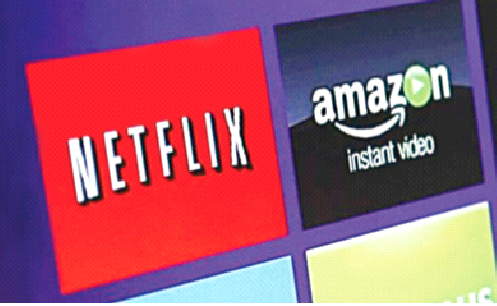Having the freedom of speech and expression doesn’t mean saying whatever you want, it means saying what’s humane, less hateful and non-prejudicial
–Akash Vajpai

“Beware of the half-truth, you may have gotten hold of the Wrong Half”. Vinupriya from Salem district of Tamil Nadu, was only 21 when she committed suicide after an unidentified person doctored her photo, showing her as scantily clad, and uploaded it on Facebook. In her suicide note, Vinupriya wrote she is embarrassed and does not know how to deal with this situation. This was not the only incident in our country. In the last 10-15 years, many girls like Vinupriya had to face this situation where someone posted their morphed pictures on social media websites and those girls don’t know what to do. Rarely do they approach the police, for fear of interrogation and haressment.
In the last 15 years with the advancement of social media sites, OTT platforms, digital media channels and social messaging services, our society has changed tremendously. It has undoubtedly benefited a lot, but simultaneously it is also facing unique challenges that were not in existence earlier.
To cope with these challenges, the government had been considering since a long time to bring in new players of the internet under the aegis of Indian laws. By replacing the old Information Technology (Intermediaries Guidelines) Rules, 2011 from the new (Intermediary Guidelines and Digital Media Ethics Code) Rules, 2021, the Indian Government has taken the first step to regulate intermediaries (Facebook, Whats App, Twitter, Google etc) and OTT Platforms (Netflix, Amazon prime, Hotstar etc) so that they can become more accountable and respectable to the Indian people and their views. According to government these new rules are its Soft-touch oversight mechanism.
A new debate has also started after these rules came into life, like whether these Rules are wolf in watchdog’s clothing or whether Government is actually trying to empower people by making these new players more accountable. In the present article, my endeavour is to explain key provisions of these new rules and analyse how these new rules are going to affect our day to day daily life on the internet so that our readers can form the opinion themselves whether these New Rules are Watchdog or Predator of our fundamental rights.
Grievance Redressal Mechanism: The aforesaid rules’ main feature is setting up Grievance Redressal Mechanism in intermediaries like Google, Facebook and Twitter, etc. If any user of these intermediaries feels that content which is available on these platforms:
- belongs to another person and to which the user does not have any right; is defamatory, pornographic, invasive of another’s privacy, insulting or harassing, racially or ethnically objectionable, relating or encouraging money laundering or gambling, is harmful to child;
- impersonates another person;
- threatens the unity, integrity, security or sovereignty of India, or causes incitement to the commission of any criminal offence or prevents investigation of any offence or is insulting to other nation;
- contains software virus or
- is patently false and untrue, and is written or published in any form, with the intent to mislead or harass a personfor financial gain or to cause any injury to any person;
- can file its grievance before the Grievance Officer of intermediaries. Grievance officer will acknowledge the grievance within 24 hours and resolve such complaint within a period of 15 days.
24 Hours Limitation: If any intermediary receives any complaint by any individual in relation to any content which expose private area of such individual, show such individual in full or partial nudity or show such individual in any sexual act or which shows morphed images of such individual, shall remove or disable access to such content within 24 hours.
Prior Notice: If intermediary like Google, Facebook, Twitter etc. remove any information like picture, post, tweet from its platform, it will give prior notification to the user who has created, uploaded and shared that information explaining the reasons or grounds for such action. These companies will also give the user adequate opportunity to dispute the action being taken and restore such information if its action of blocking the information proves wrong.
36 Hours Limitation: An intermediary shall not host or publish any information which is prohibited under any law and which is against the sovereignty and integrity of India, security of state, public order, decency or morality, contempt of court, defamation etc, but If any such information is hosted or published, the intermediary shall remove or disable access to that information within 36 hours from the receipt of Court Order or from being notified by the Appropriate Government or its agency.
By replacing the old Information Technology (Intermediaries Guidelines) Rules, 2011 from the new (Intermediary Guidelines and Digital Media Ethics Code) Rules, 2021, the Indian Government has made the first step to regulate intermediaries (Facebook, Whats App, Twitter, Google etc) & OTT Platforms
Who started the fire
Significant social media intermediary (intermediary who has more than 50 lakhs users) shall enable the identification of first originator of the information if it receives any such instruction through a judicial order or by any order passed by the competent authority under the IT Act. An order for such information shall only be passed to prevent, detect, investigate, prosecution, or punish an offence where punishment is more than five years of imprisonment.
This particular rule has created a lot of debate on social media websites. Critics say that if companies are forced to share the information with the Government about the first originator, their end to end encryption has to break, which will amount to intrusion into its users’ privacy. These companies claim that they don’t read the content of messages and that’s why they are highly secured platforms for the people to chat but for finding the first originator of the information/data they have to break the encryption and it will damage their reputation as a secured platform for conversation among the people. But if we go into the details of this rule, we find that their apprehension is baseless as this rule itself has check and balance, which can ensure people’s privacy. This rule clearly says that companies do not require to disclose the content of any electronic message or any other information related to either first originator or other users while giving the information of first originator.
Code of Ethics for OTT Platforms: Recently, we have seen many controversies regarding OTT platforms’ content. Some of the content on these OTT platforms were derogatory and offensive and deliberately mocked the Hindu religion and its Gods and Goddess. Taking note of this increasing trend, government has issued a code of ethics for the OTT platforms which says that, a publisher when decide to telecast or publish any video or article, shall take into consideration India’s multi-racial and multi-religious context and exercise due caution and discretion when featuring the activities, beliefs, practices, or views of any racial or religious group. Publisher shall also not publish any content that is likely to incite violence or disturb public order maintenance.
Grievance Redressal Mechanism against Publisher
Any person having a grievance regarding any content published by the OTT Platforms or digital media in relation to the Code of Ethics may furnish his grievance on the grievance mechanism established by the publisher. Every publisher has to appoint a Grievance Officer based in India and display his contact details on its website or app. The Grievance Officer will acknowledge the grievance within 24 hours of it being furnished. The manner of grievance redressal shall have the following arrangement–
- The publisher shall resolve the grievance within 15 days;
- Where the complainant is not satisfied with the decision of the publisher, it may prefer to appeal to the self regulating body of which such publisher is a member.
- The self-regulating body shall address the grievance in the form of guidance or advisory to the publisher within a period of 15 days.
- Where the complainant is not satisfied with the decision of the self-regulating body, it may prefer an appeal to the Oversight Mechanism established by the ministry
There is lot of hue and cry vis-à-vis this rule as some digital media section thinks it will give the government an opportunity to interfere in their work, which will amount to censorship. But this criticism is not correct. If a government body asked the publisher to remove the appeal’s content, the publisher can always approach the Court challenging this order. Therefore, it would be wrong to say that this rule has any chilling effect on the freedom of speech and expression.
Classification of Content: All content on OTT platforms will classified into the following categories:
- Content that is suitable for children and all ages shall be classified as “U”
- Content that is restricted to adults shall be classified as “A” rating

OTT platforms ran into many controversies. Some of the contents on OTT platforms were derogatory and offensive and deliberately mocked the Hindu religion
Parental Locks: Every OTT platform that has content restricted for children, whether partially or fully, shall take all efforts to restrict access to such content by a child through the “access control measures”.
Supreme Court in the case of SMW (Cr.) 3/2015 had passed the following order:
“The Government of India may frame the necessary Guidelines / SOP and implement them within two weeks so as to eliminate child pornography, rape and gang rape imageries, videos and sites in content hosting platforms and other applications”.
Similarly, the Ad-hoc committee of the Rajya Sabha laid its report on 03/02/2020 after studying the alarming issue of pornography on social media and its effect on children and society as a whole and recommended for enabling identification of the first originator of such contents.
Therefore it would not be wrong to say that If today government has framed these rules, it is because of a demand from public and courts to regulate these new internet players so that another young girl like Vinupriya will not end her life. After all having the freedom of speech doesn’t mean saying whatever you want, it means saying what’s humane, less hateful and non-prejudicial.














Comments